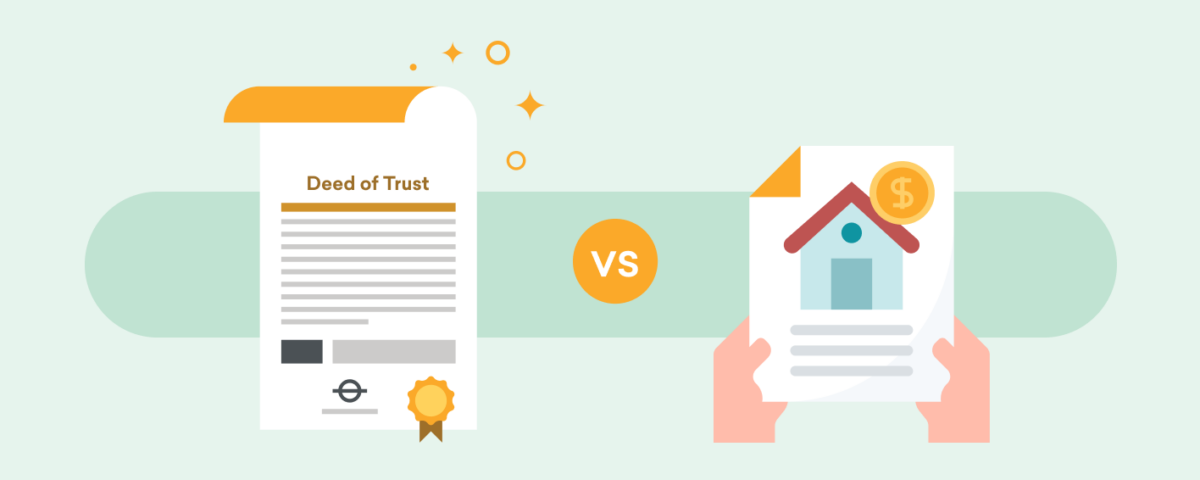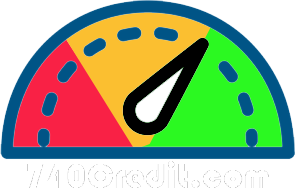Deed of Trust vs. Mortgage: What’s the Difference?
Our goal is to give you the tools and confidence you need to improve your finances. Although we receive compensation from our partner lenders, whom we will always identify, all opinions are our own. Credible Operations, Inc. NMLS # 1681276, is referred to here as “Credible.”
When you take out a mortgage, you’ll sign a stack of legal paperwork to seal the deal. One of these documents will be known as a security instrument — typically either a deed of trust or a mortgage.
These two legal documents serve essentially the same purpose: Both give the lender the ability to repossess your home by foreclosure if you fail to make your payments. However, there are some key differences.
Learn how a deed of trust compares to a mortgage and what you need to know before you get to the closing table:
What is a deed of trust?
A deed of trust is an arrangement that protects a mortgage lender and involves three parties: the borrower, the lender, and a trustee. As the homebuyer, you are the borrower. Your mortgage company is the lender, and a title company often serves as the trustee.
Under this arrangement, if you fail to make your monthly payments to your lender, the trustee can begin foreclosure proceedings to take control of the home on behalf of the lender.
States that use deeds of trust typically have non-judicial foreclosure processes. That means foreclosures are not run through the court system, and move much quicker than states that use judicial foreclosures. Foreclosure of a deed of trust can take as little as two months, but usually takes three to six months.
What is a mortgage?
Most people use the word “mortgage” to refer to a home loan. But technically, a mortgage is a legal agreement between two parties: a borrower and a lender. The mortgage gives the lender the right to foreclose on and repossess a house should the borrower fail to make the required monthly payments.
When default happens, the lender must go through a judicial foreclosure process operated through the court system. This can often take up to a year or longer to complete. At the end of the foreclosure, the home will go up for a court-ordered sale.
You can still refer to your home loan as your mortgage. Just keep in mind that in certain circumstances — like at the closing table — the word “mortgage” may refer to something more specific.
If you’re in the market for a home, Credible can help you secure a great mortgage rate. Compare rates from our partner lenders directly on our site and choose a loan that’s right for you. It only takes a few minutes, and checking rates with us won’t affect your credit score.
Deed of trust vs. mortgage
Both a deed of trust and a mortgage have several things in common, but there are also some crucial differences to note.
Differences
- Number of parties: With a mortgage, there are just two parties — you and your lender. Under a deed of trust, there are three: you, your lender, and a trustee (often a title company).
- Foreclosure process: Mortgages typically go through a judicial foreclosure process, through your county court system. Deeds of trust use a non-judicial foreclosure process.
- Length of time to foreclose: Mortgage foreclosures usually take significantly longer than non-judicial foreclosures with a deed of trust. That means you as a homeowner have a longer period of time to get caught up with your payments under a mortgage before you lose your home.
Similarities
- Security for the lender: With both documents, the mortgage lender has a security interest in your home until you fully pay the company back.
- Ability to foreclose: Both a deed of trust and a mortgage spell out a process by which the lender can foreclose on the home and repossess it in the event that you fail to make your payments.
- End point: With both documents, the security instrument is released once you fully repay your mortgage.
What is in a mortgage or deed of trust?
Since mortgages and deeds of trust are so similar, there are many common elements between the two documents.
Both a mortgage and a deed of trust will usually begin by specifying the name of the lender, the borrower, and the date in which the contract was signed. The deed of trust will also include the name of the trustee.
Other items you’ll find in both a mortgage and deed of trust:
- Amount owed: This is the total amount of the home loan, the amount you must pay back with interest.
- Address of the property: This is the location of the home you are purchasing.
- How payments are handled: The mortgage or deed of trust will usually specify how payments can be made, how the payments are applied (typically to interest first and then principal), how partial payments are handled, and what happens if a payment is late.
- Insurance requirements: Most lenders require you to carry a homeowners’ insurance policy in the event of a fire or other disaster.
- Occupancy requirements: Some loan programs require that you live in the home for a certain period of time as your primary residence to qualify. This will be outlined in the mortgage or deed of trust.
- Prohibitions: This usually includes rules that prevent you from keeping hazardous substances in your home.
Why do I have a mortgage vs. a deed of trust?
Whether you sign a mortgage or a deed of trust when closing on your home is dictated by state law. Some states require a deed of trust, and some states require a mortgage. In a few states, lenders may allow both.
Your state will have a standard form used for the mortgage or the deed of trust as well as instructions on how to record them. There may be differences to the security instrument depending on the type of loan you’re taking out.
How to determine if you have a mortgage or a deed of trust
If you need to determine whether you have a mortgage or a deed of trust, there are a few ways to go about it:
- Review your mortgage documents. If you still have your paperwork from your mortgage closing, it should be easy to figure out if you have a mortgage or a deed of trust. There should be a document labeled either “mortgage” or “deed of trust.”
- Contact your lender. Contacting the loan officer you worked with when applying for your loan should yield you a quick answer.
- Ask your county register of deeds. Deeds and mortgages are recorded with the county in which you live. You may be able to look up this information online, or you can contact the register of deeds office and ask them to help you.




